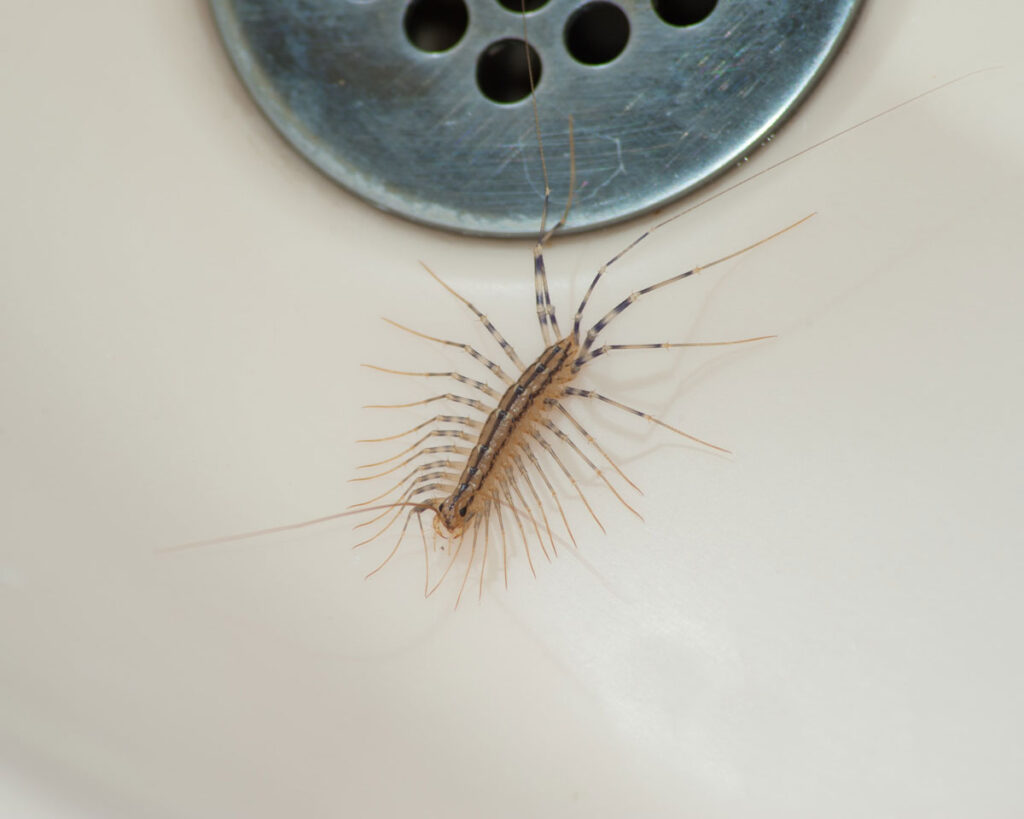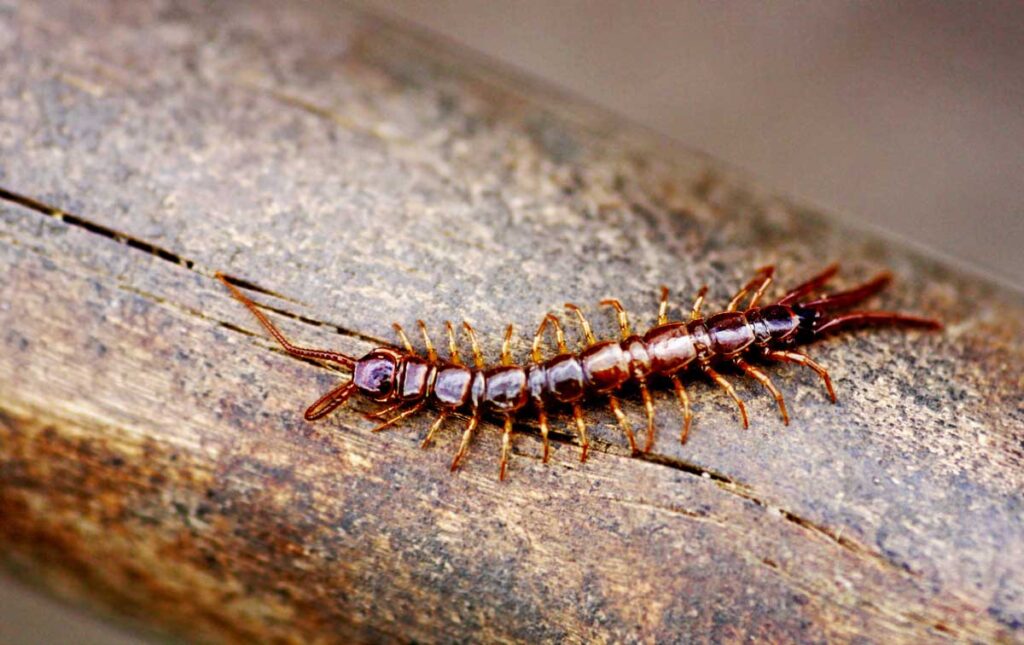Centipedes are a common pest found in Calgary homes. They’re mostly harmless, but they can bite if handled, and might be a sign of other infestations. If you’re seeing too many in your home or place of business, Poulin’s Pest Control will handle centipede removal and help you prevent their return. We’ve been a trusted provider of pest control services in the Prairie provinces since the 1950s. Contact us today to arrange for fast and effective service.
How to identify centipedes
House centipedes are about 2.5 to 5 centimetres long with up to 15 pairs of legs. They have many body segments with one pair of legs per segment, poison claws (forcipules/prehensors) on their first body segment, and two long antennae. They’re greyish-yellow or brown, have three dark stripes running down their backs, and their legs have banded colours.
Centipedes are nocturnal. They eat other bugs such as flies, beetles, and spiders. They prefer to live in damp areas, but can be found in cracks and crevices, behind baseboards, and under firewood. They overwinter and lay eggs in the soil or other moist areas. They shed their skin several times as they grow.
Centipede removal in your home
Centipedes seek out dark, damp areas like bathtubs and basements. So, an excellent way to control centipedes in your home is to address moisture problems. Fix leaky plumbing or holes in the roof. Use a dehumidifier and fans to keep the air dry.
Because they feed on arthropods, if you have centipedes in your home, you likely also have an infestation of other bugs. Take these steps to remove those centipede food sources from your home:


Make your home centipede-resistant
Centipedes may try to enter your home during the spring and summer. Take the following precautions to ensure your home is well sealed:
Centipede removal and control services in Calgary
The best way to limit centipedes is to call a centipede exterminator. Poulin’s Pest Control provides centipede control and removal services that target the creatures where they live. We eliminate centipedes from homes and businesses throughout the Prairie provinces. Contact us today, and an exterminator will get back to you within 48 hours.
Frequently asked questions about centipedes
Here are answers to some frequently asked questions about centipedes.
Q. What’s the difference between centipedes and millipedes?
A. Centipedes have flatter bodies and longer legs than millipedes. Centipedes have one pair of legs per body segment, while millipedes have two. Millipedes curl up when disturbed, while centipedes are fast and will scurry away to find a hiding spot.
Q. What do centipedes eat?
A. Centipedes eat spiders, flies, beetles, worms, and other centipedes. They also eat cockroaches and bed bugs, which can make them beneficial to have around.
Q. Do centipedes bite?
A. Centipedes have “jaws” (modified front legs) that are strong enough to catch and eat their prey. However, typical house centipede bites aren’t usually strong enough to penetrate human skin. They tend to avoid humans, but if one pierces your skin, the venom rarely causes a severe injury.
Q. How do I know if I have centipedes in my home?
A. Centipedes move quickly and hunt at night, so it’s not always easy to know if you have them in your home. Centipedes moult several times during their lives, so look for any shed skins when you clean. With a flashlight, check dark areas, such as the basement or under piles of firewood or lumber.
Q. How do I get rid of centipedes in my home?
A. The best method of centipede control is to seal the outside of your home, keep your home as dry as possible, and control their food sources in your home. Call a professional centipede exterminator to assess your house and check for other kinds of insects that might be living there.
